
Lit Hub's Fall 2018 Nonfiction Preview: Science & Technology
10 Great Fall Books for Nerds
Another season, another reading list—but you have to admit there’s something special about fall. It’s that loamy back-to-school scent, or maybe it’s the promise of colder weather, aka at least one reliable reason to stay home and read. Luckily, there are plenty of great books on the horizon. To that end, all month, we’ll be previewing some of the best nonfiction coming to shelves over the next few months, and for our second installment, I’ve collected ten of the Lit Hub staff’s most anticipated science and technology books of the season. Ten, of course, being the tip of the iceberg—and I’ve added a few extra honorable mentions at the end—so let us know which other books you’re looking forward to in the comments.
 Marcia Bjornerud, Timefulness: How Thinking Like a Geologist Can Help Save the World
Marcia Bjornerud, Timefulness: How Thinking Like a Geologist Can Help Save the World
(Princeton University Press, September 11)
Bored? Anxious? Busy? Try considering time as a geologist would—in segments of years, or hundreds of years. Understanding the rhythm and pace of the planet we live on is what Bjornerud calls “timefulness.” It all seems unfathomable, until we begin to fathom it—and realize that thinking on this scale might be the only way we can truly understand (and save) the world.
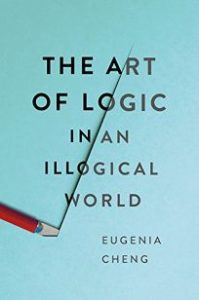 Eugenia Cheng, The Art of Logic in an Illogical World
Eugenia Cheng, The Art of Logic in an Illogical World
(Basic Books, September 11)
In this book, Cheng—a mathematician who is currently the scientist in residence at the Art Institute of Chicago—has created a logic primer with the aim of teaching readers how to construct better arguments (and maybe finally take a step towards convincing those willfully ignorant uncles we all seem to have) using mathematical principles and techniques, but without discounting the emotions at play. Both logic and illogic are needed to navigate the world, as it turns out.
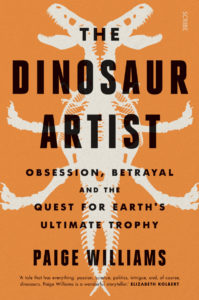 Paige Williams, The Dinosaur Artist: Obsession, Betrayal, and the Quest for Earth’s Ultimate Trophy
Paige Williams, The Dinosaur Artist: Obsession, Betrayal, and the Quest for Earth’s Ultimate Trophy
(Hachette, September 11)
It’s a caper. It’s a caper with dinosaurs. New Yorker staff writer and National Magazine Award-winner Williams’s first full-length project tells the story of a Floridian fossil hunter who sold a smuggled dinosaur skeleton illegally at auction in 2012—and the much bigger story of the fossil business at large.
 Deborah Blum, The Poison Squad: One Chemist’s Single-Minded Crusade for Food Safety at the Turn of the Twentieth Century
Deborah Blum, The Poison Squad: One Chemist’s Single-Minded Crusade for Food Safety at the Turn of the Twentieth Century
(Penguin Press, September 25)
You’ve probably never heard of Harvey Washington Wiley, but he’s probably the reason you aren’t sick right now. At the end of the 19th century, new advances in chemistry had introduced a host of questionable and often downright poisonous elements into the American food supply. Milk contained formaldehyde (to keep it fresh!). Brown sugar was cut with ground-up insects. Canned beans were made greener with copper sulfate. But in 1883, Wiley, a chemistry professor from Purdue University, was appointed chief chemist of the Department of Agriculture, where he began a life-saving crusade against the manufacturers. Pulitzer Prize–winning journalist Blum tells the whole story in this fascinating book.
 Hannah Fry, Hello World: Being Human in the Age of Algorithms
Hannah Fry, Hello World: Being Human in the Age of Algorithms
(Norton, September 25)
Artificial intelligence isn’t the stuff of science fiction anymore—in fact, it’s riding around in our pockets all day, suggesting things to us: what to watch next, who to date, the fastest way to get home. But Hello World is engaged with the bigger choices that algorithms are poised to make: decisions about healthcare, justice, safety, and privacy. And is technology really neutral, or can the human bias of the programmer make it into the code? (Spoiler alert: it’s the latter.) Mixing mathematics and storytelling, this book asks the big questions about algorithms and humans—and their future together.
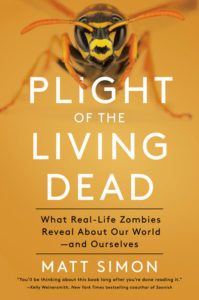 Matt Simon, Plight of the Living Dead: What Real-Life Zombies Reveal About Our World—and Ourselves
Matt Simon, Plight of the Living Dead: What Real-Life Zombies Reveal About Our World—and Ourselves
(Penguin, October 2)
Full disclosure: I hate zombies. They are my least favorite supernatural creature (though I still like vampires, see below). But this book isn’t about the stumblers or shamblers, but about the zombifications that happen in nature—from the cockroach who is stung in the brain and controlled by the jewel wasp, to the parasitic fungus that brainwashes ants, to rabies, which takes over the human brain and prevents it from drinking the water that might save it. It is all extremely cool and also terrifying.
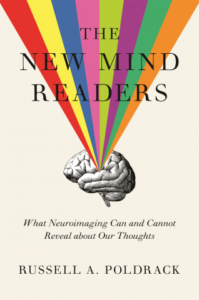 Russell A. Poldrack, The New Mind Readers: What Neuroimaging Can and Cannot Reveal About Our Thoughts
Russell A. Poldrack, The New Mind Readers: What Neuroimaging Can and Cannot Reveal About Our Thoughts
(Princeton University Press, October 16)
Can a brain scan read your mind? Well, maybe not yet, but it’s not totally out of the question. In this book, Poldrack, the Albert Ray Lang Professor of Psychology at Stanford University, takes us through the history of neural imaging and the awesome potential (and limitations) of functional magnetic resonance imaging (fMRI) to see inside our thoughts and feelings.
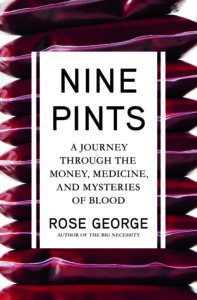 Rose George, Nine Pints: a Journey Through the Money, Medicine, and Mysteries of Blood
Rose George, Nine Pints: a Journey Through the Money, Medicine, and Mysteries of Blood
(Metropolitan, October 23)
Blood: it terrifies us and sustains us. It can destroy us or save us. It is mythologized and commodified and disposed of. In this book, George (author of The Big Necessity and Ninety Percent of Everything) investigates all of this and more, from ancient bloodletting practices to the “Menstrual Man.” But do you really want to read a book about blood? I say yes. As a certain bleach-blonde vampire once said: “It’s always got to be blood. Blood is life. Why do you think we eat it? It’s what keeps you going. Makes you warm. Makes you hard. Makes you other than dead. Of course it’s blood.”
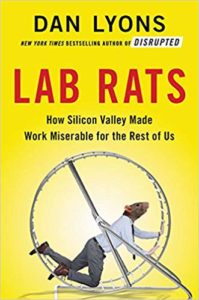 Dan Lyons, Lab Rats: How Silicon Valley Made Work Miserable for the Rest of Us
Dan Lyons, Lab Rats: How Silicon Valley Made Work Miserable for the Rest of Us
(Hachette, October 23)
In which Lyons, author of Disrupted and former journalist and writer for HBO’s Silicon Valley, takes a look at contemporary workplace culture and the way it’s been influenced by tech startups—and their dehumanizing, stress-inducing, low-paying, insecure and often mercurial practices. He calls out Netflix CEO and chairman Reed Hastings as well as Jeff Bezos, whom he calls “a modern-day Ebenezer Scrooge.” I am looking forward to reading this from my desk in my open-plan office, which is apparently one of those dehumanizing factors! [Ed. note: it’s just a big room, not much of a plan, really.]
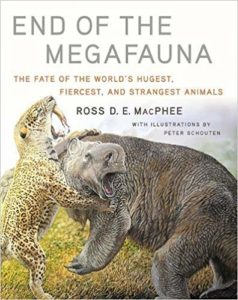 Ross D.E. MacPhee, illus. by Peter Schouten, End of the Megafauna: The Fate of the World’s Hugest, Fiercest, and Strangest Animals
Ross D.E. MacPhee, illus. by Peter Schouten, End of the Megafauna: The Fate of the World’s Hugest, Fiercest, and Strangest Animals
(Norton, November 13)
Who doesn’t love megafauna? And who doesn’t love books with pictures? In this book, paleomammologist Ross D.E. MacPhee weighs the many possible reasons why our continents are no longer overrun by enormous animals—and suggests how they might return.
See also:
Kurt Caswell, Laika’s Window: The Legacy of a Soviet Space Dog (Trinity, September 18)
Jeff Nesbit, This Is the Way the World Ends: How Droughts and Die-offs, Heat Waves and Hurricanes Are Converging on America (Thomas Dunne, September 25)
Donald R. Prothero, When Humans Nearly Vanished: The Catastrophic Explosion of the Toba Volcano (Smithsonian, October 16)
Emily Temple
Emily Temple is the managing editor at Lit Hub. Her first novel, The Lightness, was published by William Morrow/HarperCollins in June 2020. You can buy it here.



















